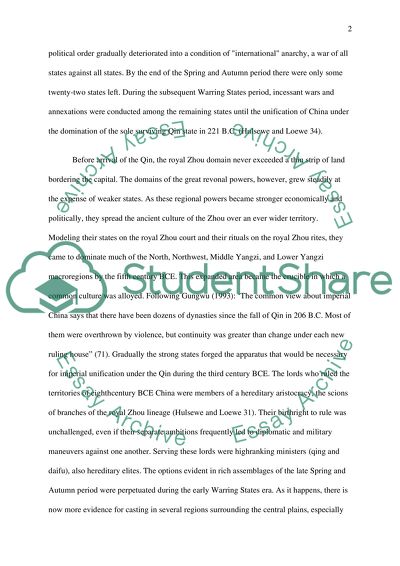Rise of Qin in China Essay Example | Topics and Well Written Essays - 3000 words. Retrieved from https://studentshare.org/miscellaneous/1514885-rise-of-qin-in-china
Rise of Qin in China Essay Example | Topics and Well Written Essays - 3000 Words. https://studentshare.org/miscellaneous/1514885-rise-of-qin-in-china.


